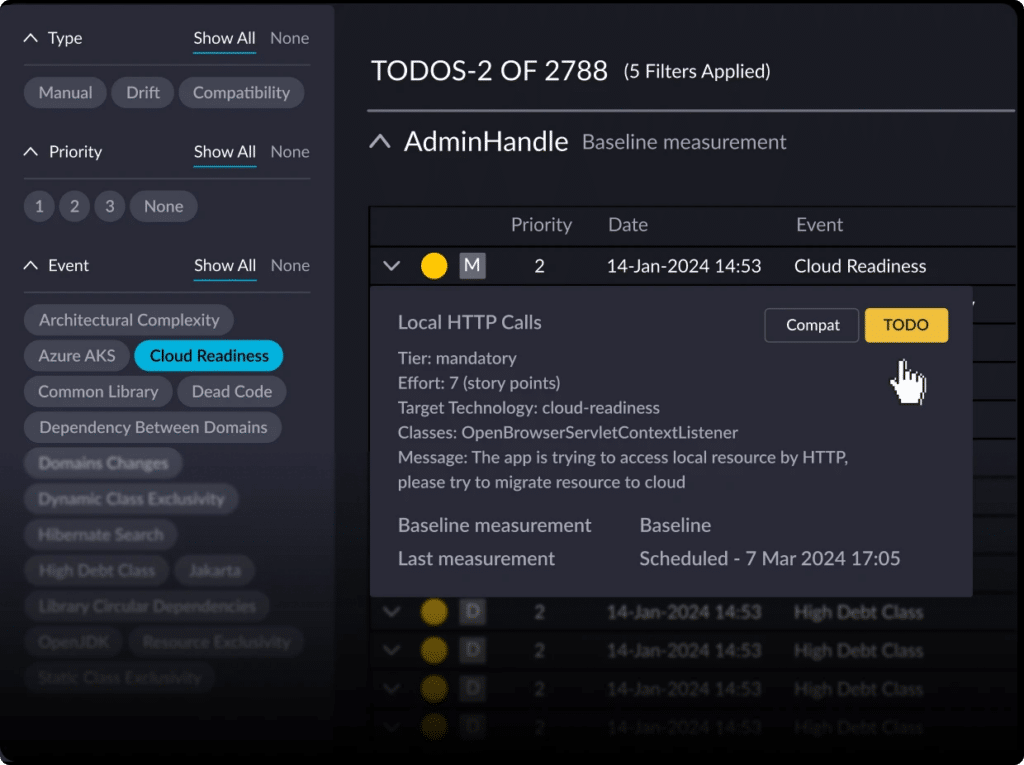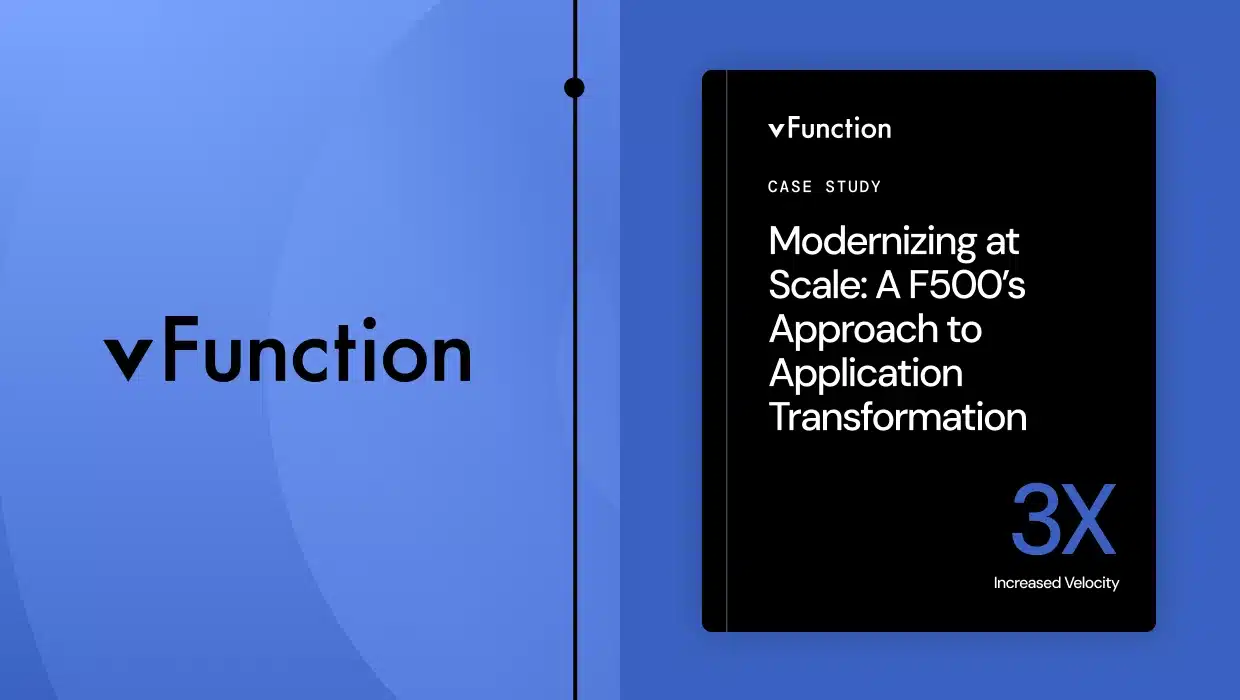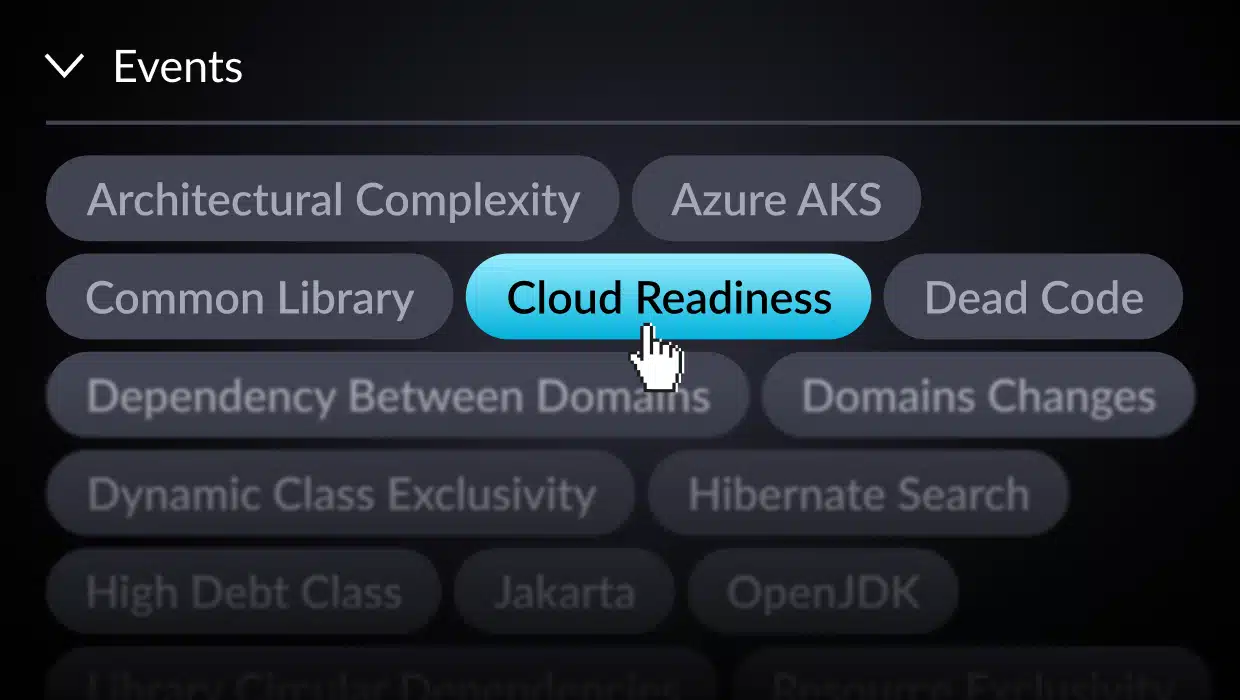Organizations moving to the cloud must first undertake a cloud readiness assessment, a vital step in ensuring a smooth transition. This evaluation identifies potential migration challenges such as compatibility, security risks, and data complexities while aiming to optimize resources and improve workflows.
Statistics indicate the urgency of such assessments, with 70% of workloads expected to be running in a cloud computing environment by 2028 (Gartner).
This blog will highlight key aspects of cloud readiness assessments, providing a checklist and migration tools. Whether you are considering a cloud migration project or are in the middle of it, proper readiness is essential for harnessing the cloud’s full potential and achieving a successful migration.
What is a cloud readiness assessment?
A cloud readiness assessment is essentially a diagnostic deep-dive into an organization’s IT ecosystem, crucial for planning a successful migration to the cloud. It meticulously evaluates an organization’s cloud adoption suitability, spotlighting potential obstacles, streamlining resources, and carving out a bespoke migration strategy. This process not only illuminates your organization’s preparedness for the cloud but also crafts a clear path forward, smoothing out bumps and optimizing benefits along the way.
This assessment looks into various aspects of your organization, including:
- Infrastructure: Assessing your current hardware, network, and data center capabilities to see if they’re ready for cloud migration.
- Applications: Evaluating your applications’ compatibility with cloud environments and identifying migration challenges and dependencies.
- Security: Analyzing your security posture and identifying vulnerabilities that need to be addressed before moving to the cloud.
- Data: Assessing your data storage, management, and migration requirements to ensure data integrity and compliance.
- People: Evaluating your team’s skills and knowledge to see if they can manage and support cloud environments.
- Processes: Analyzing your existing IT processes and workflows to see what needs to be adapted or optimized for the cloud.
Now that we know the basic ingredients of an assessment, how does it all come together in a cohesive plan?
How does a cloud readiness assessment work?
A cloud readiness assessment is unique to your organization and project. Assessing your organization’s readiness for cloud adoption is not a one-size-fits-all process. The assessment must be tailored to each organization’s specific needs and goals. However, the general approach involves the following steps:
Define objectives and scope
Identify the applications, data, and infrastructure that will be migrated and the desired outcomes of the migration.
Gather data
Next, collect relevant data about your current IT environment, including infrastructure specifications, application dependencies, security policies, and data storage requirements. This data can be gathered through interviews, surveys, documentation reviews, and automated tools. The more data points and angles you can cover here, the better foundation you’ll have for accurately assessing where your organization and team are at.
Analyze and evaluate
Analyze the collected data to evaluate your organization’s cloud readiness across various dimensions. This analysis will examine infrastructure, applications, security, data, people, and processes, giving you an excellent idea about potential challenges, risks, and opportunities. Although it’s almost guaranteed that some unknowns will surface while executing cloud migration initiatives, the goal is to identify anything significant regarding costs or timeline.
Develop recommendations
Based on the analysis, develop recommendations for addressing gaps, optimizing resources, and mitigating risks. Leverage the deep expertise of anyone you are working with, including consultants. Use their practical knowledge and your specific data to formulate recommendations that align closely with your cloud migration goals and are customized to your organization’s unique needs and aspirations.
Create a roadmap
The final step before executing cloud migration is to develop a detailed roadmap. It outlines steps, timelines, and resource planning, drawing from earlier findings and recommendations for a clear adoption strategy. Crucially, stakeholders across departments should be involved for a well-rounded strategy aligning with broad business goals, ensuring the roadmap is comprehensive and tailored.
Four steps of a cloud readiness assessment
To distill the cloud readiness assessment process, it’s practical to categorize activities into four key strategic phases, recognizing that each organization’s path to the cloud is unique. These phases provide a structured approach to the assessment.
Assessment & planning
This foundational phase sets the stage for a successful assessment. Don’t rush this part!
- Define objectives: Be clear about your “why” for cloud migration. Are you looking for cost optimization, improved scalability, enhanced agility, or a combination of benefits? Document these objectives with specific, measurable goals.
- Scope: Precisely define the applications, data, and infrastructure components that fall within the assessment. A phased approach might be beneficial, starting with a pilot migration of non-critical workloads.
- Success criteria: Define measurable metrics to measure the success of your cloud migration. This could be reduced infrastructure costs, improved application performance (e.g., response times), or decreased security incidents.
Taking inventory of your current state
This step requires a thorough investigation of your current IT environment.
- Infrastructure: Inventory your hardware, network devices, and data center setup. Assess server utilization, network bandwidth, and storage capacity. Identify old hardware or software that will hinder cloud migration.
- Application portfolio: Categorize your applications based on their cloud readiness. Analyze application architecture, dependencies, and licensing models. Prioritize applications for migration based on their criticality and complexity.
- Security: Perform a security audit, including vulnerability assessments and penetration testing. Review security policies, access controls, and data encryption practices. Ensure compliance with industry regulations.
- Data: Analyze your data storage, management, and migration requirements. Classify data based on sensitivity and regulatory compliance needs. Evaluate data migration tools and strategies.
Creating the vision for your future state
Now that you have a good understanding of your current state, you can envision your ideal cloud environment.
- Cloud provider: Evaluate different cloud providers (AWS, Azure, GCP) based on your requirements. Consider service offerings, pricing models, security features, and geographic locations.
- Architecture: Design your cloud architecture, including network topology, virtual machine sizing, storage solutions, and security configurations. Explore cloud services that can enhance your applications.
- Migration plan: Develop a detailed migration plan outlining the sequence of application and data migrations, timelines, resource allocation, and rollback strategies.
Gap analysis & recommendations
This step bridges the gap between your current reality and your cloud aspirations.
- Gaps: Compare your current state assessment with your future state design to identify any discrepancies or shortfalls. These gaps could be in infrastructure, applications, security, data management, or even skills and processes.
- Recommendations: Develop specific, actionable recommendations to address the identified gaps. This might be upgrading hardware, refactoring applications, implementing new security controls, or adopting DevOps practices.
- Roadmap: Develop a detailed roadmap with prioritized action items, timelines, resource allocation, and risk mitigation strategies. This will guide your cloud migration journey.
Benefits of a cloud readiness assessment
Conducting a cloud readiness assessment is crucial for a seamless cloud migration. This proactive step ensures informed decision-making, resource optimization, and risk reduction. Rather than a hasty cloud shift, this strategic approach yields multiple advantages.:
Reducing risks and avoiding costly mistakes
A cloud readiness assessment helps you identify potential issues upfront, such as application compatibility problems, security vulnerabilities, or data migration complexities. By addressing these issues early on, you can minimize disruption to your business and avoid costly rework or delay. A well-planned migration guided by an assessment ensures a seamless transition with minimal downtime and impact on revenue.
Optimizing resources and improving efficiency
Accurately understanding your resource requirements is critical to cost optimization in the cloud. A cloud readiness assessment helps you right-size your resources, avoiding over-provisioning or under-provisioning. It also gives you insight into cloud-native services and automation capabilities that may be available to improve efficiency and reduce operational overhead once you’ve migrated over.
Enhancing agility and flexibility
Cloud computing offers unparalleled agility and flexibility to adapt to key business drivers. A cloud readiness assessment helps you leverage these benefits by speeding up application deployment and services. It also enables you to scale up or down for greater flexibility and responsiveness.
Improving security and compliance
Security is top of mind in any IT environment and the cloud is no exception. A cloud readiness assessment helps you strengthen your security by identifying and addressing vulnerabilities before migrating to the cloud. It also ensures compliance with industry regulations and data privacy requirements by ensuring that proper security controls are in place once you’ve migrated.
Cloud readiness assessment checklist
A cloud readiness assessment is tailored to each business, but common elements exist. Use the checklist below as a framework to guide your assessment, covering all critical areas. This will help you thoroughly understand the current state of your infrastructure and applications. Focus on these key areas:
| Area | Checklist item | Description |
| Infrastructure | Inventory | Document all hardware (servers, network devices, storage), software, and data center components. |
| Capacity | Assess server utilization, network bandwidth, and storage capacity. | |
| Age and condition | Evaluate the age and condition of your hardware and software. Identify any outdated or end-of-life systems. | |
| Compatibility | Determine the compatibility of your infrastructure with your chosen cloud environment (e.g., virtualization support, network configuration). | |
| Virtualization | Assess your current virtualization strategy and its compatibility with the cloud. | |
| Applications | Inventory | Catalog all applications, their versions, and their dependencies. |
| Architecture | Analyze application architecture and its suitability for cloud deployment (e.g., monolithic vs. microservices). | |
| Licensing | Review software licenses to ensure they permit cloud deployment and understand any licensing changes in the cloud. | |
| Dependencies | Identify and document application dependencies (libraries, databases, etc.) and potential conflicts. | |
| Cloud services | Explore cloud services (e.g., serverless functions, managed databases) that can enhance your applications. | |
| Security | Policies and procedures | Review existing security policies, procedures, and standards. Update them to align with cloud security best practices. |
| Vulnerability assessment | Conduct vulnerability assessments and penetration testing to identify security weaknesses. | |
| Access control | Evaluate access control mechanisms and user authentication methods. Implement strong identity and access management (IAM) in the cloud. | |
| Data encryption | Assess data encryption practices and key management processes. Ensure data is encrypted at rest and in transit. | |
| Compliance | Ensure compliance with relevant industry regulations (e.g., GDPR, HIPAA) and data privacy laws. | |
| Data | Inventory | Catalog all data assets, their formats, and their storage locations. |
| Classification | Classify data based on sensitivity, criticality, and regulatory compliance requirements. | |
| Storage | Evaluate data storage requirements and potential cloud storage solutions (e.g., object storage, block storage). | |
| Migration | Assess data migration tools, strategies (e.g., online vs. offline), and potential challenges. | |
| Governance | Establish data governance policies and procedures for the cloud environment. | |
| People | Skills gap analysis | Identify skills gaps within your IT team related to cloud technologies and cloud management. |
| Training and development | Develop training and development plans to address skills gaps and prepare your team for cloud operations. | |
| Roles and responsibilities | Define roles and responsibilities for managing and supporting cloud environments. | |
| Organizational structure | Assess the need for organizational structure changes to support cloud adoption and operations. | |
| Processes | IT service management | Evaluate existing IT service management (ITSM) processes and adapt them for the cloud. |
| DevOps | Assess your DevOps maturity and identify areas for improvement to streamline development and deployment in the cloud. | |
| Automation | Explore automation opportunities to streamline IT operations, provisioning, and management in the cloud. | |
| Monitoring and management | Evaluate cloud monitoring and management tools and strategies to ensure visibility and control over your cloud environment. |
This checklist delivers a thorough framework for evaluating your organization’s cloud readiness, laying the foundation for a strategic migration roadmap. Remember, this process doesn’t have to be entirely manual—there are numerous tools and consultants available to facilitate various aspects of the assessment, making it more comprehensive and efficient.
Best cloud readiness assessment tools
Choosing the right tools can significantly simplify your cloud readiness assessment and provide valuable insights into your IT environment without the manual work. While many tools are available, here are the top three that can help out teams that are looking to gauge their cloud readiness.
vFunction
vFunction, with its AI-driven architectural observability capabilities, streamlines application modernization and cloud migration. Though not exclusively a cloud readiness tool, its features significantly aid the assessment process by providing a detailed analysis of application portfolios, software dependencies, complexities, and migration risks, enabling a robust evaluation of cloud readiness. It helps you:
- Assess application complexity: Understand the complexity of your applications and the challenges of cloud migration.
- Visualize dependencies: Generate interactive visualizations to understand the relationships between application components.
- Decompose monolithic applications: Break down monolithic applications into smaller, more manageable microservices for easier cloud deployment.
- Prioritize cloud readiness tasks after analyzing your applications
vFunction’s focus on application modernization makes it an excellent tool for organizations that want to understand and refactor their applications as part of their cloud migration strategy. It enhances the assessment and modernization process with its ability to automatically visualize applications and produce and prioritize detailed task lists related to cloud readiness, as well as optimizing for other business goals, such as resiliency, scalability, and engineering velocity. The platform allows you to configure automated alerts tailored to these objectives. Users can streamline their workflow by sorting and filtering tasks across various dimensions, including domain, status, and priority. Additionally, vFunction facilitates seamless integration with project management tools by enabling the export of these tasks to platforms like Jira and Azure DevOps for efficient tracking and execution. When you’re ready to move to the cloud, close partnerships with AWS and Microsoft Azure help streamline cloud migration and deliver cost-effective offerings.
Check out various use cases for application modernization.

vFunction enhances the assessment and modernization process by automatically visualizing applications and producing and prioritizing detailed task lists related to cloud readiness,
CloudCheckr
CloudCheckr is a cloud management platform that offers a suite of tools for cost optimization, security, and compliance. For those who are looking to move to AWS in particular, its cloud readiness advisor, focused on AWS’s Well-Architected Pillars, can help you:
- Assess cloud readiness: Evaluate your environment against industry best practices and security standards.
- Find cost savings: Discover ways to optimize cloud spend and reduce waste.
- Improve security posture: Identify and remediate security vulnerabilities and compliance violations.
- Automate governance: Automate governance policies to ensure consistent security and compliance across your cloud environment.
CloudCheckr’s focus on cost optimization and security makes it a great tool for organizations that want to maximize their cloud investments.
Cloudamize
Cloudamize is a cloud migration planning and automation platform that utilizes an industry-leading analytics algorithm to produce the right-sized recommendations for cloud infrastructure. The insights provided by this platform can help you:
- Discover and analyze: Automatically discover and analyze your IT environment to understand your cloud migration needs.
- Plan and design: Design your target cloud architecture and plan your migration strategy.
- Estimate costs: Calculate the cost of running your applications in the cloud.
- Automate migration: Automate the migration of your applications and data to the cloud.
Cloudamize’s focus on migration planning and automation makes it a good fit for organizations that want to speed up cloud adoption.
Conclusion
Moving to the cloud offers many benefits but requires careful planning and execution. A cloud readiness assessment is the first step in creating your cloud strategy, providing valuable insights into your organization’s cloud readiness. By identifying the challenges, optimizing resources, and developing a comprehensive strategy, you can minimize the risks and maximize the benefits of cloud adoption.
Ready to unlock the power of the cloud and modernize your applications?Try vFunction for free and unlock AI-driven insights for efficient application modernization. Simplify architecture, mitigate risks, and strategize for cloud migration. Contact us to consult with our cloud readiness experts to accelerate your cloud transition.







